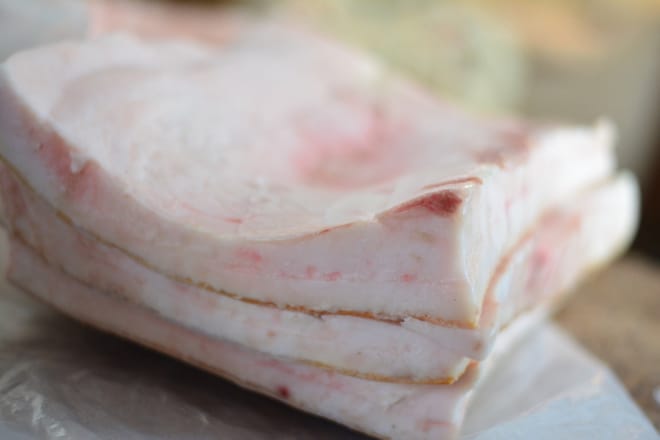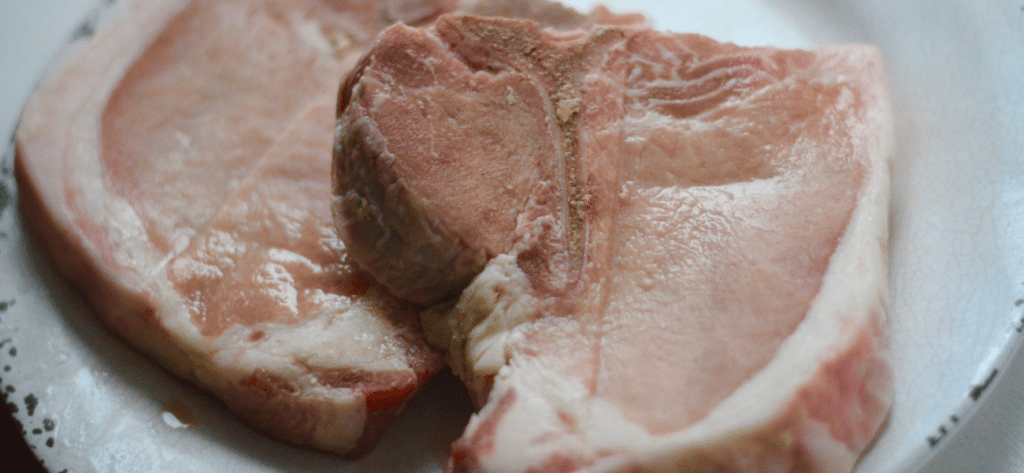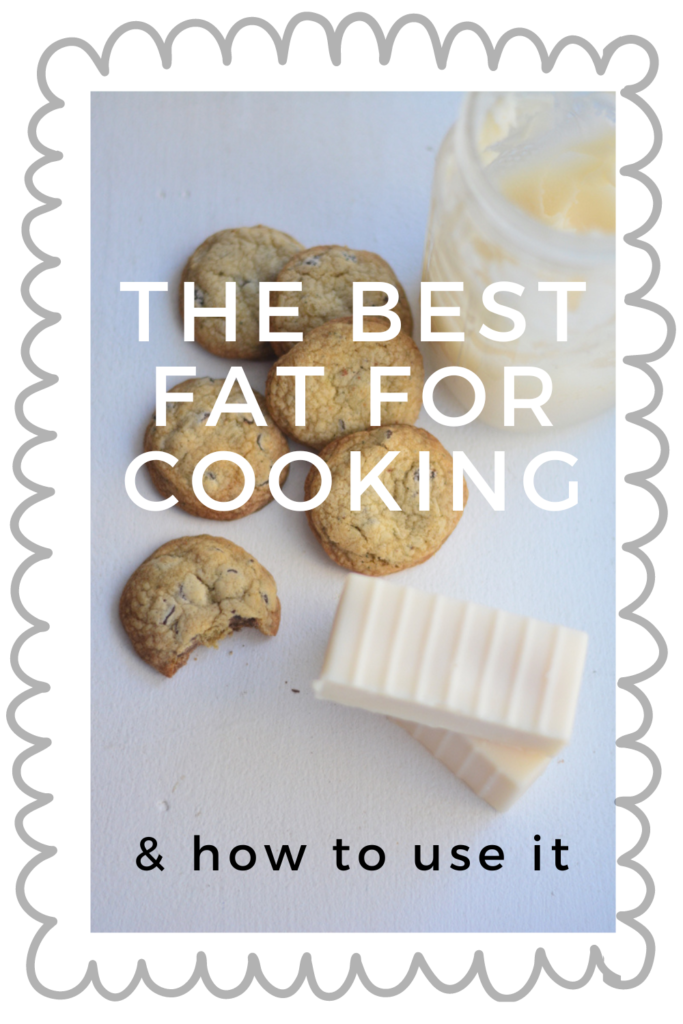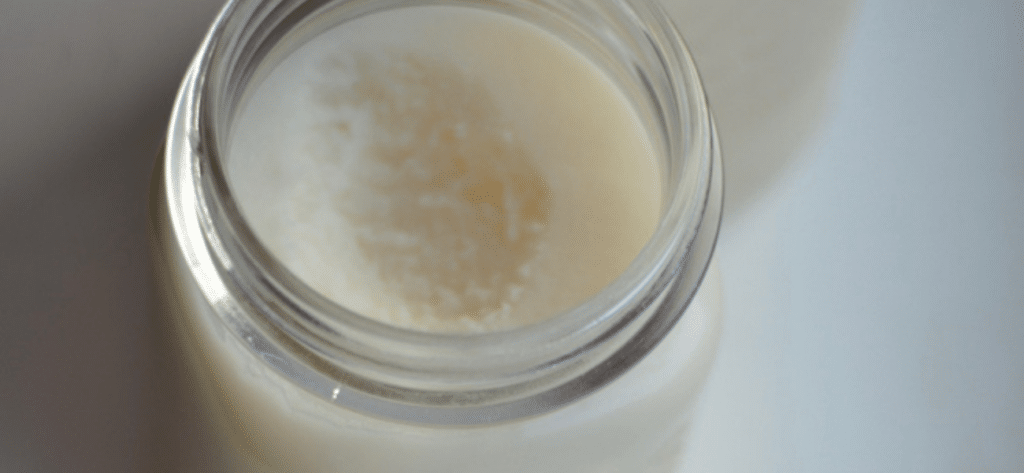Last Updated on December 27, 2024 by Michelle
It’s no secret that I love pork. In fact, one of the #1 reasons people find my blog is by searching “pig fat,” so I guess you could say I’m famous for pigs.
Or maybe I have made pig fat famous, depending on how you look at it.
All jokes aside, learning ways to use pork fat in my homestead kitchen has been one of my favorite parts of raising pigs. I once thought pork fat was a bonus reason to raise pigs, but these days it’s one of my top reasons–not even kidding.
Being able to raise pork fat–right here on our homestead–to turn into lard that we use in place of olive oil, butter, and Crisco is really cool.
So while I won’t be attempting to grow olives here in New England, or harvest coconuts to make coconut oil, we are raising all of the fat my family uses year round.
What is pork fat?
Essentially pork fat is any extra fat leftover after processing a pig. Generally, pork fat is rendered into lard, which has a million uses. There are two main types of pork fat–back fat and leaf fat. Lots of people choose to only render and use leaf fat lard–which is considered higher quality and less “piggy” tasting–but I choose to render both into lard and use both leaf fat and back fat interchangeably without noticing much difference.
The secret to not having your back fat taste “piggy” is all in the way you process it.
Hop over here for the tips and secrets in my Complete Guide to Rendering Lard
How to use lard (rendered pork fat)
Given that pork fat is the main source of fat for my family for years now, we’ve gotten creative with ways to use lard, which is just rendered pork fat.
- Use lard as a substitute for butter on your grilled cheese sandwiches.
- Pop your popcorn in lard in place of coconut oil or butter.
- Replace butter with lard in your cookie recipes–seriously, don’t knock it until you’ve checked out my secrets and tried it yourself.
- Use lard in place of any oil you usually use for greasing baking bans, frying french fries or donuts, sautéing stir fries, roasting veggies–you name it, you can use lard for it!
- Create fluffy, tender, moist biscuits, cookies, cakes, muffins, and more.
- Season your cast iron. Pork fat’s high smoke point makes it amazing for seasoning cast iron.
- Use lard as a natural conditioning agent for wooden cutting boards, rolling pins, and spoons.

How to cook pork fat
For all the tips and secrets, definitely go to my Complete Guide to Rendering Lard, but here’s the jist:
- Cut your pork fat into small pieces so they cook evenly, or possibly even grind the fat if you’re really dedicated and want to get the most lard possible out of your fat.
- Place the fat into a large pot.
- Cook the fat, low and slow.
- Once the fat is all cooked and liquified (you’ll have some small chunks left–those are the yummy cracklings) strain the liquid lard as thoroughly as possible.
- Pour your liquid gold into jars. Voilà! Rendered pork fat.
- Bake with your lard and enjoy your hard work.

How to make cracklings from pork fat
Cracklings are the byproduct of rendering pork fat into lard.
You get cracklings by slowly cooking pork fat over low heat until it liquifies (that’s the lard), and the cracklings will be leftover when you strain your lard. They’re delicious to eat on salads, in baked goods or cornbread, or on top of soups, in eggs, or tacos.
To make cracklings, place your leftover pieces that you strained out of your liquid lard in a hot cast iron skillet. Sprinkle them liberally your favorite seasoning and continually keep turning and moving them in the skillet until they are crisp. It only takes a few minutes.
Store them in the fridge for up to a week.
Is pork fat different from Crisco?
While pork fat and Crisco look very similar, they’re actually very different.
You can think of lard as the “real” version of Crisco, since it’s one ingredient–rendered pork fat–and Crisco is a combination of highly processed vegetable oils.
Although they can be used in the same ways, I choose to use lard and avoid Crisco. However, keep in mind that pork fat from the store–labeled as lard that usually comes in little boxes or containers next to Crisco–is hydrogenated in a similar fashion to Crisco. I highly recommend finding a local source for pork fat and rendering your own lard, so you know exactly how it’s made.
Does pork fat taste bad?
When it’s rendered correctly, pure white lard will be mostly flavorless. Back fat lard will have a slightly more “porky” flavor than lard made from leaf fat, but both are a great, neutral-flavored oil that won’t overpower other flavors in your dish.

Pork fat vs. beef fat (lard vs. tallow)
Rendered pork fat is called lard and rendered beef fat is called tallow. Both are great options for healthy fats in your kitchen, with a few differences.
Lard has a milder flavor profile, and tallow will impart a beefy flavor on anything you add it to. If you’re looking to add beef flavor to your dish, opt for tallow. If you’re looking for a mild flavor that doesn’t overpower, grab lard.
Tallow had a bit of a heavier nature, whereas lard tends to taste lighter.
Both have high smoke points and are great for frying.
While lard and tallow are both healthy fats, lard is known for enhancing the texture of baked goods, and tallow is known more as a frying fat.
At room temperature, tallow stays firmer than lard, which makes lard a better choice for spreading like butter (remember those grilled cheese sandwiches I mentioned?)
In this article you’ll find lots more details comparing the two and you can listen in as RuthAnn Zimmerman and I dive deep into the comparison of lard vs. tallow on my podcast (and on youtube): Are lard and tallow good fats?
And on this episode of the Simple Doesn’t Mean Easy podcast, you’ll love the conversation I had with Jill Winger, all about Old Fashioned Foods: Are old-fashioned foods actually healthy?
Grab my Pantry Checklist & lots of great deals on great ingredients
Pork fat is an essential ingredient in our kitchen, but there are a lot of other items too. I am happy to share my pantry checklist with you because I firmly believe real food can be much more “doable” and convenient to make if we just make sure to have the important staples on hand.
I also firmly believe we all need to keep some moolah in our pockets whenever possible, so I’ve filled my pantry checklist with exclusive discount codes as well.
Go here to grab yours right now. It will take about 4 seconds & instantly save you time and money.
More on pork fat:
- Complete guide to pork lard
- Complete guide to rendering lard
- Are lard and tallow good fat?
- How to bake with lard (and why you should)
Talk to me about pork fat…
If you have questions, leave a comment below. And please tag me on ig to show me your lard in your kitchen @souly.rested.
“If you are willing and obedient, you will eat the good things of the land.” Isaiah 1:19
Pin this for later!
Click on the image below to pin this post.



I love using lard!
Same 🙂